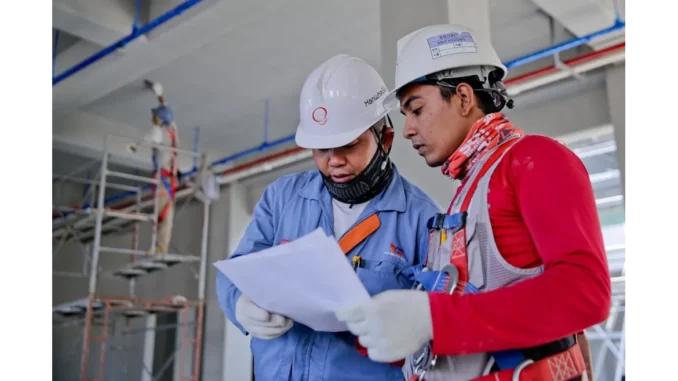
In the ever-evolving landscape of construction and infrastructure within England and Wales, the past year has seen significant developments, particularly with the introduction of the National Infrastructure Planning Guidance portal. To gain insight into how these changes are affecting those involved in Nationally Significant Infrastructure Projects (NSIPs), I sat down with Tom Richardson, a seasoned project manager specialising in large-scale infrastructure projects.
Focus360 Energy: property compliance services – pre-planning to post-construction. Learn more.
Tom’s experience in the field offers a vivid perspective on the practical implications of these policy shifts. With the relaxed ambience of a local café as our backdrop, he shared his insights with a mix of professional acumen and candid reflection.
“Navigating the NSIP process has always been a complex task,” Tom began, “but the new guidance and the portal streamline some of the bureaucracy we’ve been dealing with for years.” His tone was optimistic yet grounded, aware of both the benefits and the challenges that new policies bring.
The National Infrastructure Planning Guidance portal, developed with extensive input from government, industry, and various stakeholders, aims to ease the NSIP process from pre-application through to post-consent changes. Tom elaborated on how this tool has become indispensable for professionals like him: “The portal centralises information, which is a game-changer. It means less time wading through disparate sources and more focus on the actual execution of projects.”
He acknowledged the significance of the government’s consultation on operational reforms in 2023, which served as a precursor to the current guidance. “There was a real sense that our feedback was being heard,” Tom noted. “It’s not just about ticking boxes; there’s a genuine effort to address the pain points we’ve raised over the years.”
Delving deeper into the specifics, Tom explained how the guidance affects various aspects of project management. “For instance, there’s clearer direction on environmental impact assessments and stakeholder engagement,” he said. “These are areas where we often see disputes arise, so having robust guidance helps pre-empt conflicts.”
However, he was quick to point out that guidance alone doesn’t eliminate disputes. “You still have the human element—different parties with different priorities. But with clearer guidelines, there’s a better framework for resolving issues before they escalate.”
When asked about the integration of digital tools in the planning process, Tom was enthusiastic. “Digitalisation is a big part of this transition. The portal is user-friendly, and it facilitates better data sharing and collaboration.” He paused, then added with a smile, “It’s about time we caught up with other industries in that respect.”
Yet, despite these advancements, Tom acknowledged the challenges that remain. “One of the biggest hurdles is still aligning the interests of all stakeholders,” he said, leaning back in his chair. “Infrastructure projects touch on so many areas—environmental concerns, community impact, economic benefits. Balancing these is never straightforward.”
Reflecting on the broader impact of these changes, Tom recognised the potential for long-term positive outcomes. “With better planning and guidance, we can achieve more sustainable and effective infrastructure development,” he said. “It’s about building with foresight, not just for today, but for future generations.”
He also highlighted the importance of ongoing dialogue between the government and industry professionals. “Regular updates and consultations are key. The construction landscape is dynamic, and our regulatory frameworks need to be equally adaptable.”
As our conversation drew to a close, Tom offered some advice for those entering the field. “Stay informed and flexible,” he advised. “The landscape is changing, and those who adapt will find the most success.”
In essence, while the introduction of the National Infrastructure Planning Guidance portal marks a significant step forward, the journey is ongoing. Professionals like Tom Richardson play a crucial role in navigating this evolving terrain, ensuring that the promise of streamlined processes translates into tangible benefits for all involved in NSIPs.
Lewis Davis


Be the first to comment